Abstract
A twin-signal device that provides both escape and avoidance conditioning in ensuresis control is described involving a procedure documented by two case studies. In addition, a technique of fading as an adjunct to the process is utilized with one subject. The results indicate that a combination of operant and respondent conditioning involving escape and avoidance training may be an improvement over the more traditional conditioning procedure.
Full text
PDF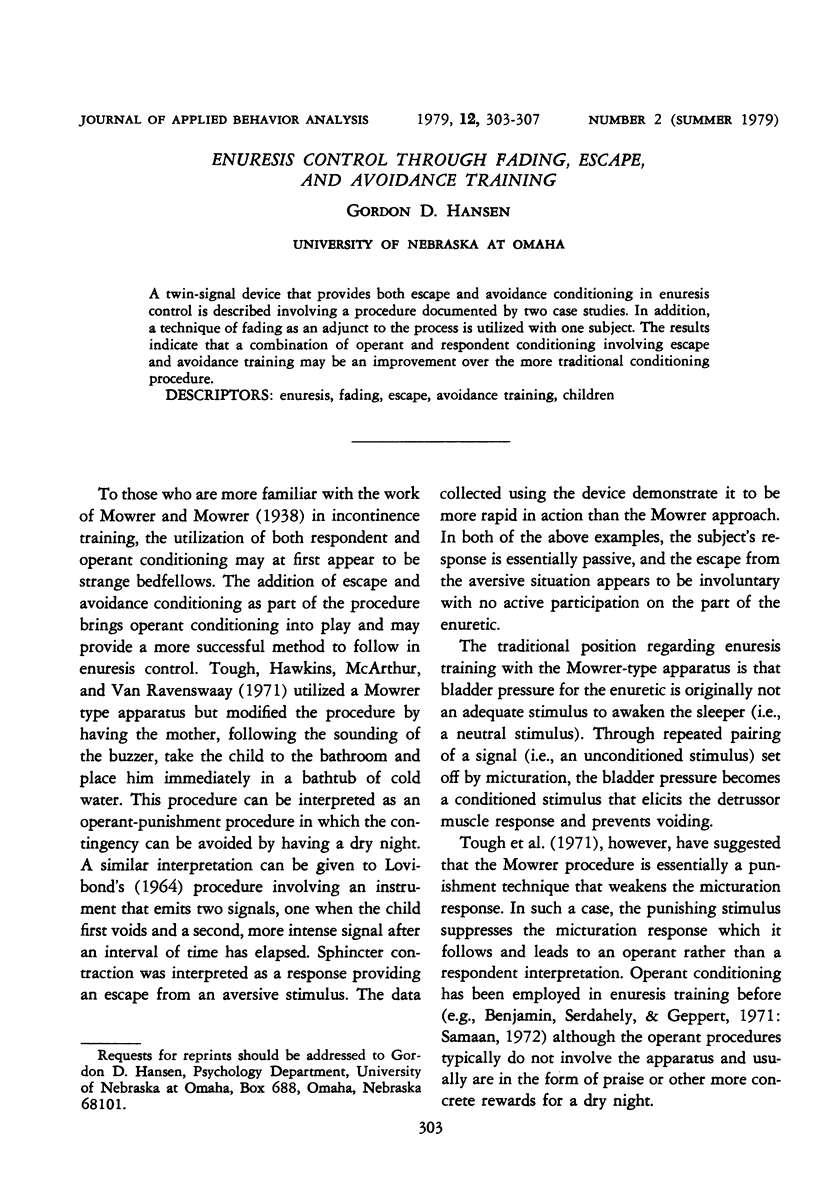
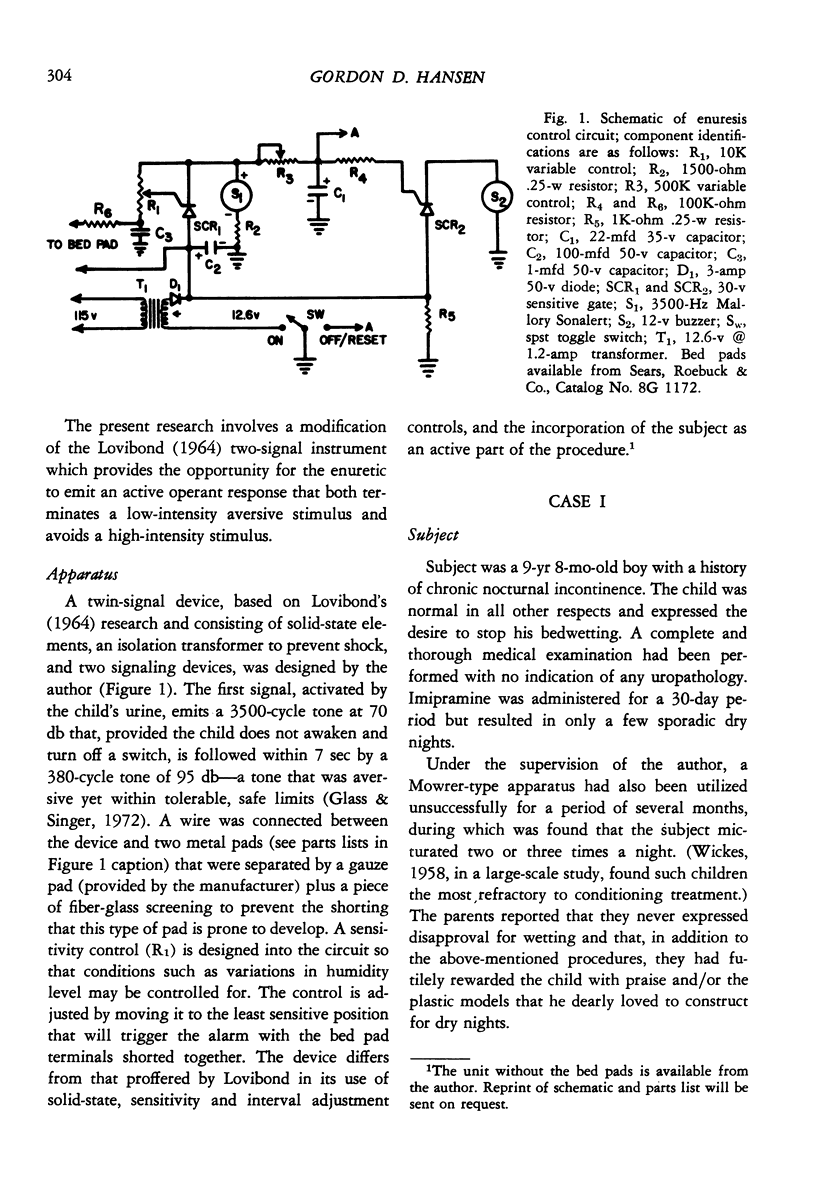
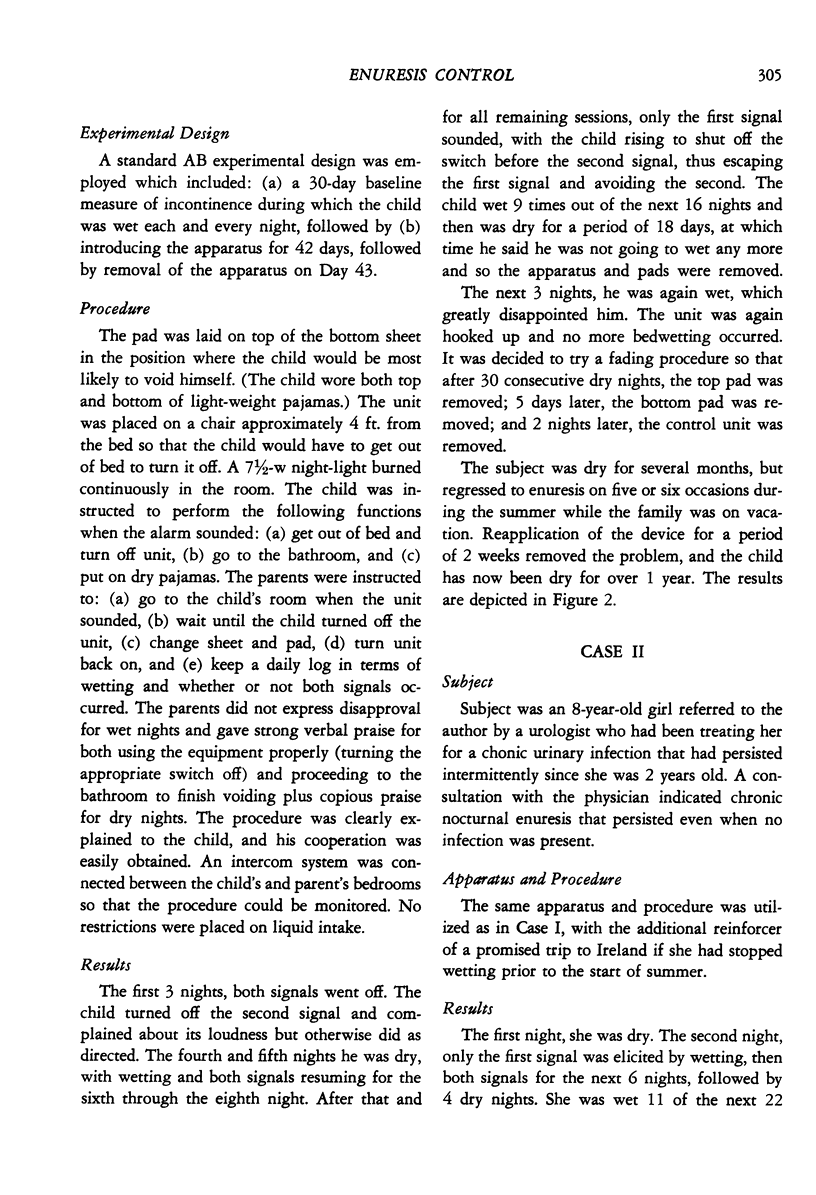
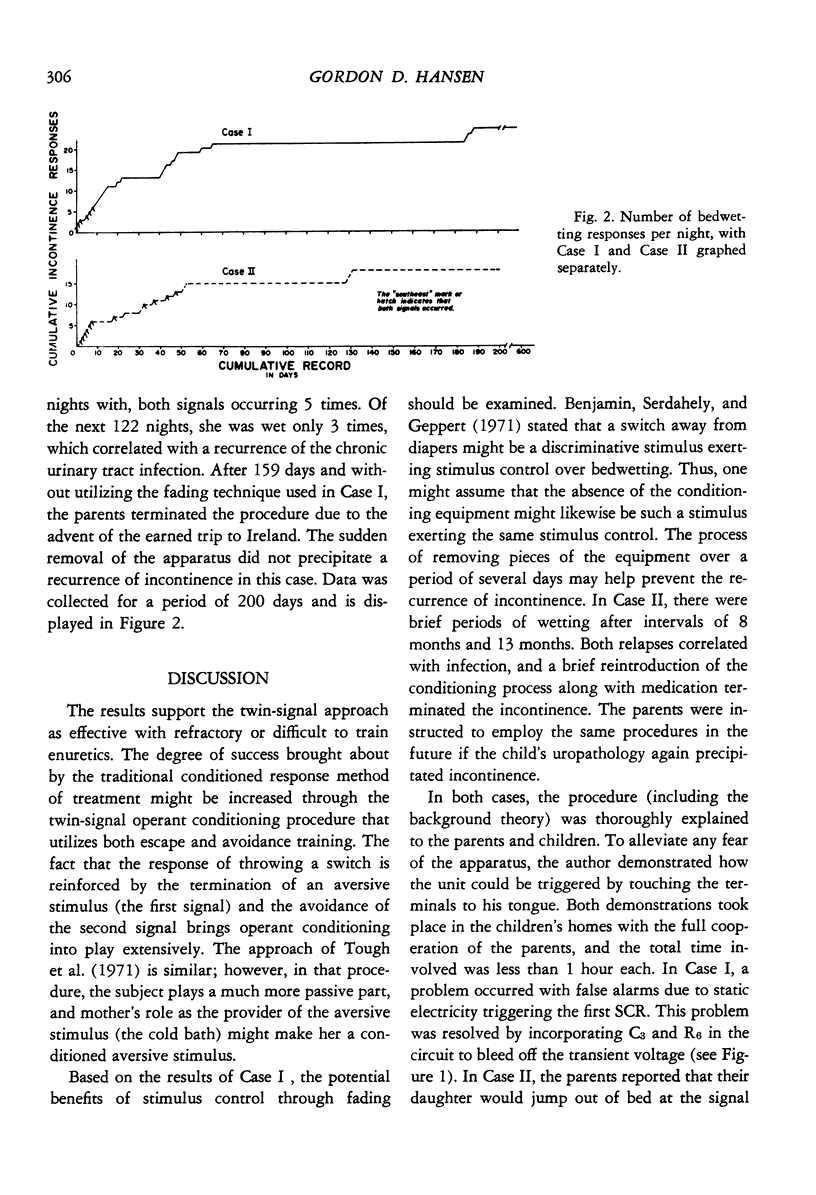
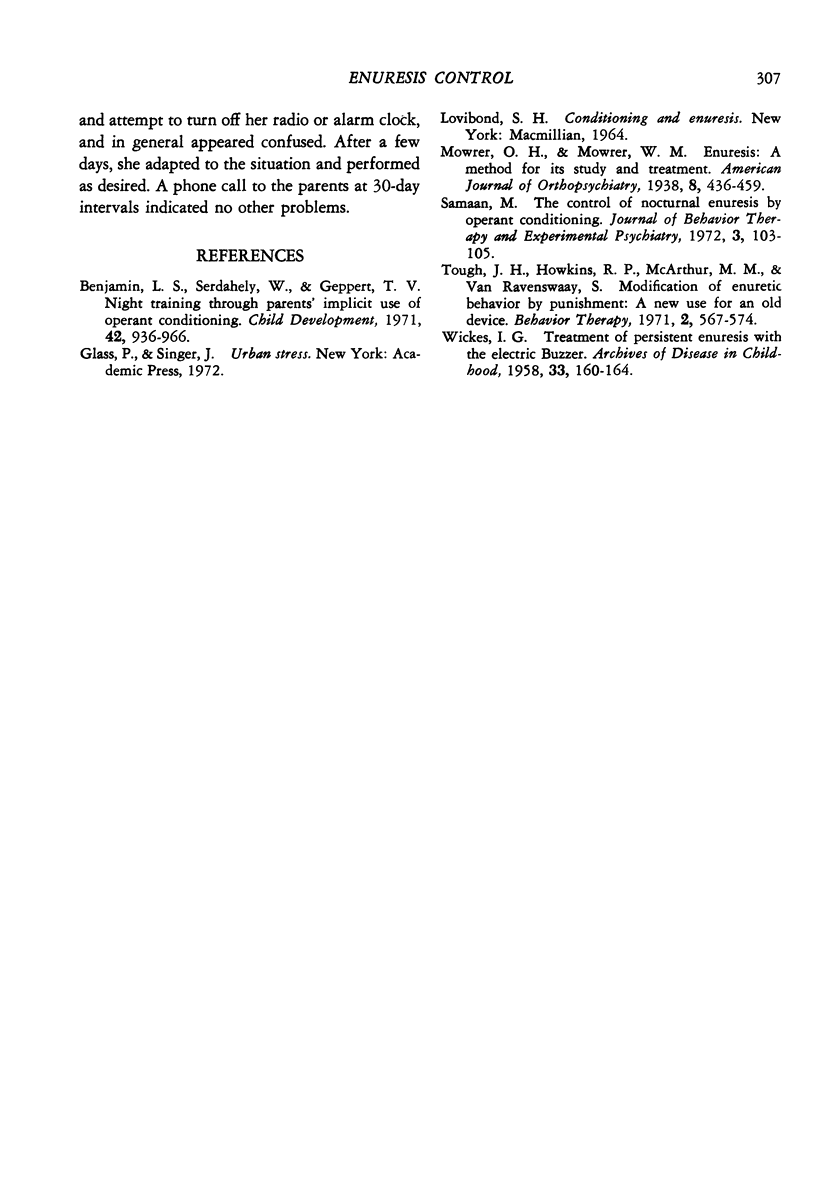
Selected References
These references are in PubMed. This may not be the complete list of references from this article.
- Benjamin L. S., Serdahely W., Geppert T. V. Night training through parents' implicit use of operant conditioning. Child Dev. 1971 Sep;42(3):963–966. [PubMed] [Google Scholar]
- WICKES I. G. Treatment of persistent enuresis with the electric buzzer. Arch Dis Child. 1958 Apr;33(168):160–164. doi: 10.1136/adc.33.168.160. [DOI] [PMC free article] [PubMed] [Google Scholar]


